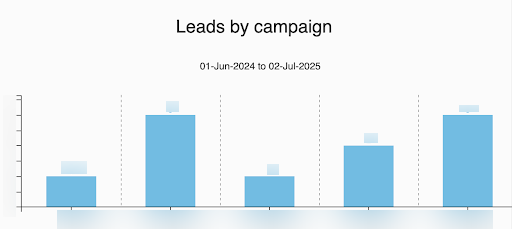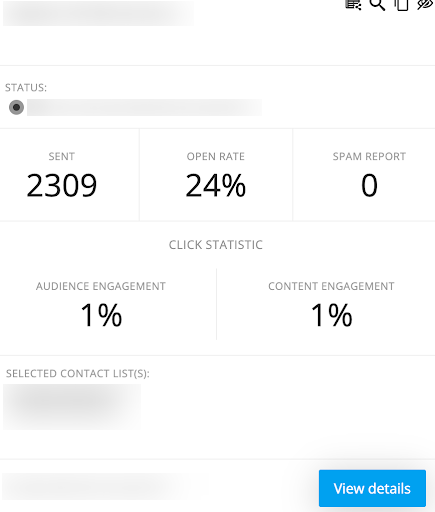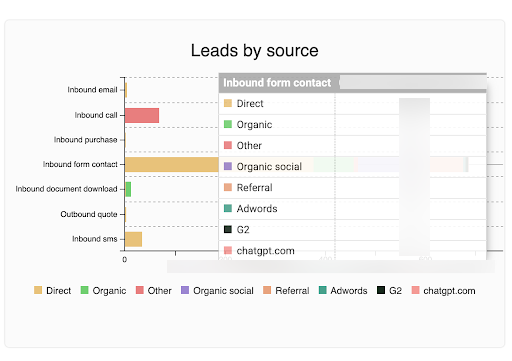If you're running a marketing agency or managing a franchise with multiple locations, one thing is clear: you need to justify your budget with hard numbers.
Clients, CMOs, and stakeholders don’t care about vague metrics; they want to know what’s driving revenue. That means tracking real ROI (Return on Investment).
Yet despite all the data available today, most marketers still struggle to connect the dots between campaigns and actual business outcomes. Whether it's SEO, PPC, social media, or email, each channel plays a role, but unless you're set up to track performance properly, you're flying blind.
In this article, we’ll break down what ROI really means in marketing, how to calculate it accurately, and what tools can automate this process, especially at scale.
What is marketing ROI (and why should you care)?
Marketing ROI measures how much revenue a campaign generates relative to its cost. The basic formula is simple:
(Revenue from Campaign – Cost of Campaign) ÷ Cost of Campaign × 100
If you spent $2,000 on Google Ads and generated $6,000 in revenue, your ROI would be 200%. But most real-world campaigns aren’t this clean. Sales don’t always close immediately, multiple touchpoints are involved, and not every lead converts right away.
Agencies and franchises face added complexity: different teams, fragmented platforms, and inconsistent data tracking across markets or clients. That’s why getting ROI right requires more than math; it requires structured attribution, centralized reporting, and clear goals.
Organic (SEO) ROI
Organic traffic is often one of the highest-margin channels for any business. It’s not free; you pay for content, optimization, and tools, but once your pages rank, they keep driving leads without ongoing ad spend.
To measure SEO ROI, you need to track how organic sessions turn into real outcomes.
Start by setting up goal tracking in Google Analytics or GA4, or Matomo or SeoSamba’s free analytics: contact forms, quote requests, phone clicks, and purchases. Then, assign values to these goals based on average conversion rates and deal size.

Because SEO is long-term, it’s essential to calculate not just revenue from immediate clicks, but lifetime customer value from users acquired via search.
This helps justify the upfront cost of building content and backlinks. ROI doesn’t always show up in the first month, but over time, organic often outperforms paid.
For agencies and franchises, tools like SeoSamba can aggregate rankings, traffic, lead attribution, and even CRM pipeline stages across locations, all in one place. That’s key when you’re reporting to dozens or hundreds of stakeholders.
Paid Media ROI
Paid ads give you instant visibility, but ROI can fluctuate fast. You might generate leads quickly, but if acquisition cost is high or lead quality is low, the math won’t work long-term.
To track ROI, go beyond CPC or impressions. Focus on Cost Per Qualified Lead (CPQL) and Cost Per Sale. Connect ad platforms like Google Ads or Meta with your CRM, so you can see which campaigns actually close deals, not just drive traffic.

Use UTMs and conversion tracking to separate branded vs. non-branded search, or remarketing vs. prospecting. Without this, it’s easy to over-credit campaigns that retarget users already in your funnel.
Also, factor in LTV : CAC (lifetime value vs. customer acquisition cost). A $300 CPL might be excellent if your customer’s lifetime value is $5,000. Context matters.
Franchise operations benefit from centralized dashboards that show spend, results, and ROI per location. This helps you compare markets and allocate budget where it performs best.
Social Media ROI
Social is tricky. It can be a great channel for brand awareness, audience building, and customer engagement. But tracking direct ROI is hard unless you're running conversion-focused campaigns.
Start by separating organic from paid social. Organic metrics (likes, shares, followers) don’t tell you much on their own. The real question is: how many people from social channels actually converted?
Use link tracking, UTMs, and platform-specific pixels to trace engagement back to outcomes. In Meta Ads, set up custom conversions tied to your site goals. In GA4, review social-assisted conversions.
For franchises or multi-unit brands, consistent branding and messaging across social channels is crucial, but so is local relevance. Social ROI often improves when the corporation provides creative, but local teams handle targeting and execution.
Social content doesn't just drive direct conversions; it also supports other channels. A LinkedIn post might not generate a lead today, but it builds trust that helps close a deal from email or search later. That’s where attribution models like “multi-touch” or “time-decay” give you a clearer picture.

Email ROI
Email consistently drives the highest ROI of any digital marketing channel. It’s low-cost, high-conversion if your list is healthy and your content is relevant.
To calculate email ROI, track not just open and click rates, but what happens after. Did the click result in a form fill? A purchase? A phone call? Use automation tools like SeoSamba to build sequences that move leads down the funnel, and record what actually converts.
For example, if your abandoned cart email brings back $10,000 in sales on a $500/month platform subscription, that’s a 1,900% ROI. But the real gains come from segmentation and personalization.
Generic emails underperform. Targeted campaigns with personalized subject lines and dynamic content typically see higher CTR and revenue per recipient.

The real key to ROI tracking
Here's the reality: no single channel does all the work. A user might find your blog via Google, follow you on Instagram, get retargeted on Facebook, and finally convert after receiving a sales email. If you’re using last-click attribution, you’ll miss everything that led up to that final conversion.
Instead, use multi-touch attribution wherever possible. This might mean switching to GA4’s data-driven model or using a platform like SeoSamba to track the full customer journey across channels.
In multi-location or multi-client environments, this becomes even more important. Attribution lets you see what’s truly driving revenue across different verticals, geographies, and buyer types.
Tools that make ROI tracking easier (especially at scale)
If you’re managing campaigns across multiple clients or locations, spreadsheets and screenshots won’t cut it. You need systems that:
- Track leads and revenue by source
- Sync marketing and CRM data
- Generate ROI reports without manual work
This is where platforms like SeoSamba come in. Designed specifically for agencies and franchises, it centralizes SEO, PPC, CRM, and call tracking data in one interface. That means no more chasing local teams for reports, no more pulling data from five platforms to build a single client deck.
Whether you're measuring ROI on a Facebook campaign in Florida or organic traffic growth for a franchise in Oregon, having a unified system saves hours and improves accuracy.
You can’t improve what you don’t track
The takeaway is simple: ROI tracking isn’t optional. If you're not connecting marketing activity to business outcomes, you’re guessing, not optimizing.
Whether you're running organic campaigns, paid ads, social strategies, or email flows, the same rule applies: define your goals, track conversions, calculate ROI, and double down on what works.
And if you're trying to manage all of this across 50 locations as a franchise or 20 clients as an agency? You need automation, attribution, and analytics in one place.

That’s where widely recognised platforms like SeoSamba help you scale, not just your campaigns, but your results.






